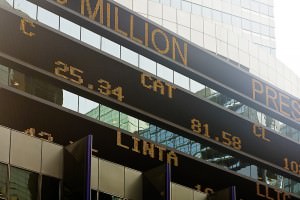Inside the Financial Market Mindset
This group mentality is common in the finance sector, as seen by the occurrence of asset “bubbles.” Bubbles are periods of excitement that stimulate an influx of investments towards a certain asset. The 2008 real estate bubble and subsequent surge of mortgage-backed securities is one such instance where confidence in a seemingly wonderful asset led to a flood of investments. Unfortunately, in a bubble, the assets themselves are often overvalued by investors, both financially and emotionally. That, plus the social pressures of the market, causes many to buy in. Any information that threatens to disrupt the illusionary bubble is dismissed or rationalized.
[pullquote]…Financial assets are not concrete. Aside from the symbols and numbers, there is no physical substance to them. Their value is simply what the market deems appropriate. [/pullquote]
Bubbles are suitably named because, like real bubbles, they eventually burst. When an asset bubble bursts, it’s not because new information was introduced, but rather the information that was previously swept under the rug can no longer be ignored. Not everyone in 2008 was blind to the fact that derivatives based on subprime mortgages were unstable. But it made people excited, it made people confident, and it made people money.
Clearly, people know asset bubbles exist. So why do they keep happening? Why did the tech bubble of 2000 not teach the lesson that new assets lead to excitement, but not necessarily to returns? Because each time, people are quicker to point a finger than reflect on their own actions. The skewed perception of risk and reward that causes people to fall prey to asset bubbles in the first place also gives rise to anger and blame once the bubble has burst. If blame overshadows guilt in the aftermath of a burst asset bubble, it will only lead to repetition of the behavior. In order to learn, one must feel responsibility for their actions.
So now that we’ve looked at how emotions affect decisions on financial assets, we should also look at how the financial assets themselves affect emotions. As psychologist David Tuckett outlines in his paper “Addressing the Psychology of Financial Markets,” there are three main characteristics of financial assets that have a profound effect on human cognition.
First, financial assets are not concrete. Aside from the symbols and numbers, there is no physical substance to them. Their value is simply what the market deems appropriate. They are not like consumer goods in the sense that you purchase an item with intrinsic value once, and that’s the end of it. In order to buy and hold a financial asset, you must “commit to a dependent relationship of risk and reward.” Each decision to hold the asset is not unlike the one made to initially buy it. As renowned economist John Maynard Keynes once argued, making a long-term investment requires a certain amount of emotional investment known as a “leap of faith.” Without this leap of faith, you may not have a strong enough conviction to hold onto the asset if it underperforms. People who trade without this conviction often regret their decision and sell prematurely. This type of impulsive trading is expensive. Therefore, the abstract nature of financial assets requires both rational and emotional consideration.
This “leap of faith” concept can be illustrated by Facebook’s first day of trading. On May 18, Facebook’s long-anticipated shares became available for trade. This was a promising investment opportunity based on a very popular and solid company. However, on that first day, shares of Facebook traded barely above its IPO price. Was it because there was breaking news that the company was financially unstable? Or was a corporate scandal uncovered that prompted investors to distance themselves? No. It was because people lacked conviction and shied away from investing in an overvalued asset. And to make matter worse, problems with trading mechanisms and uncertainty about trade orders further stripped confidence from investors. All the excitement prior to that day was just hype, and hype isn’t enough to compensate for the insecurity generated by overvaluation.































Share the post "Inside the Financial Market Mindset"